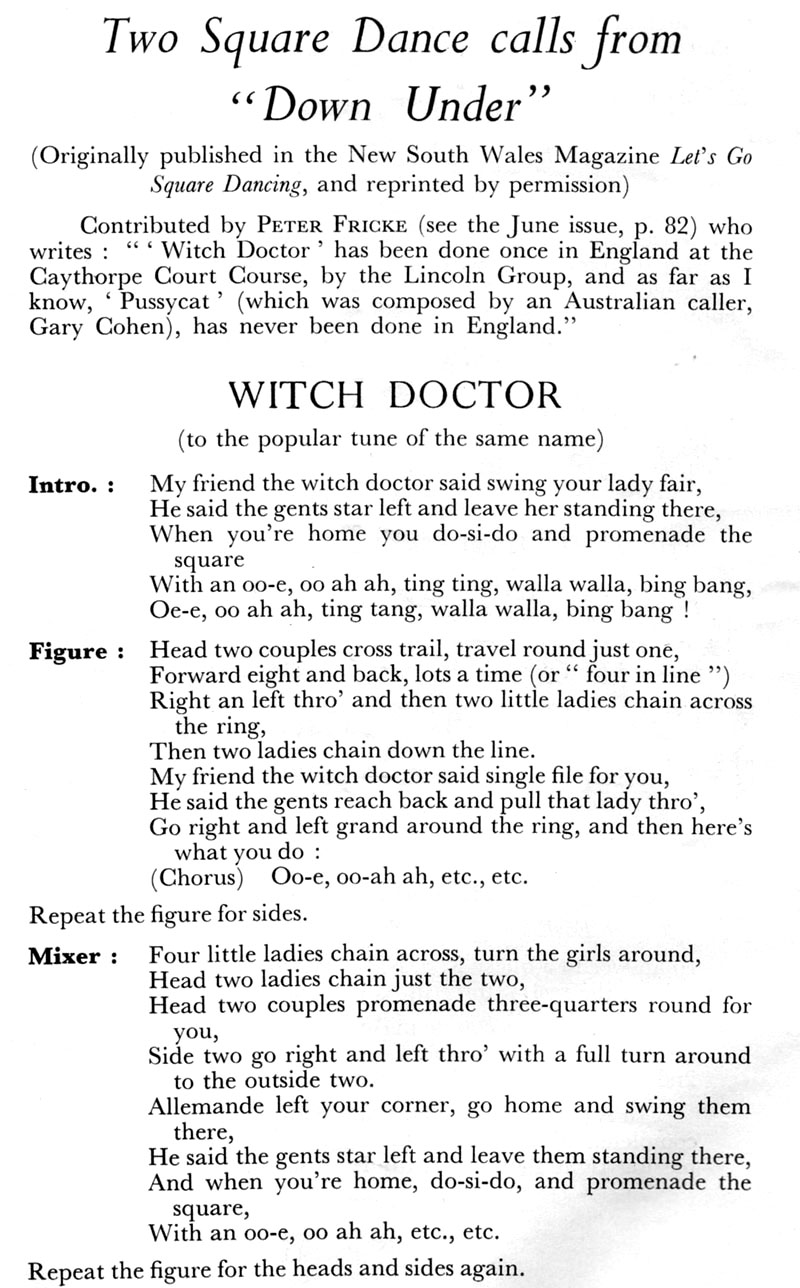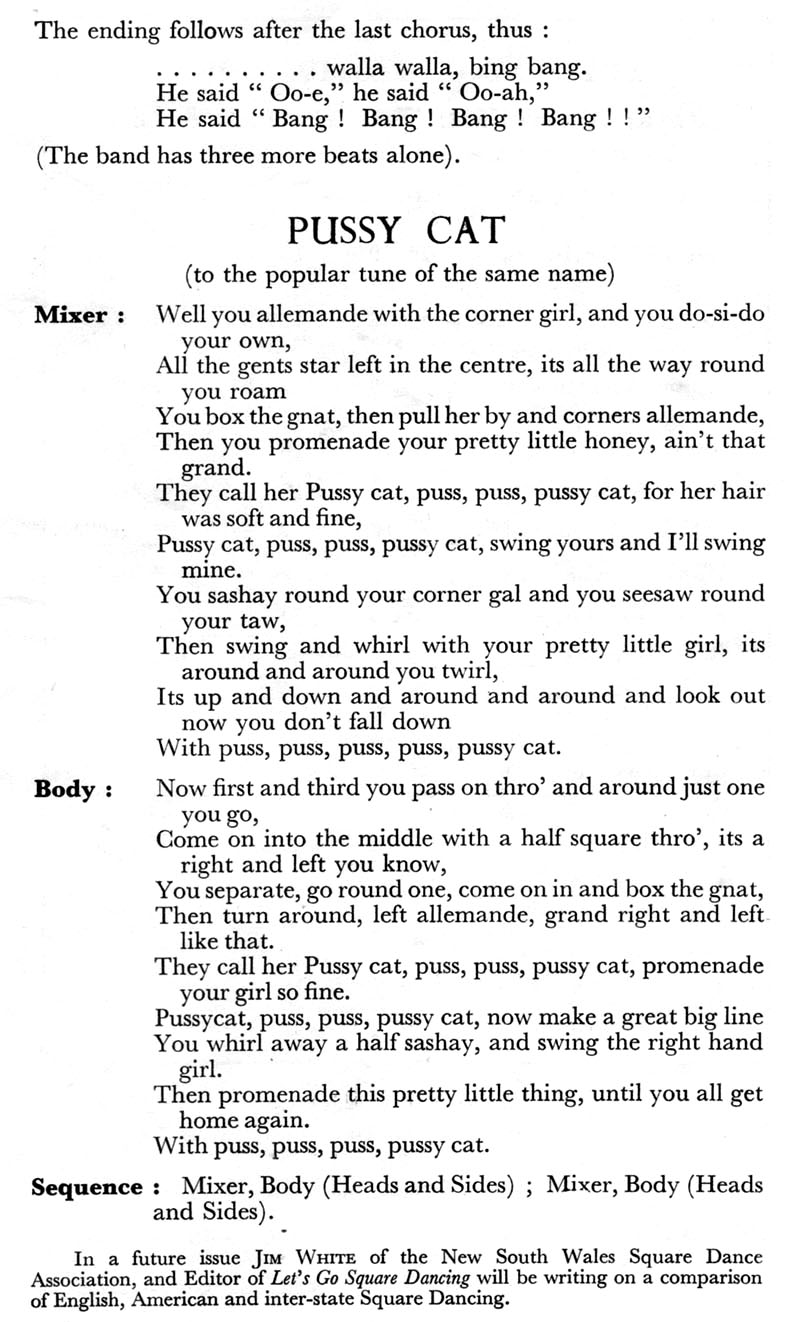Original pages from English Dance & Song, September 1959


Back to Dance Index
| Figure | |
| A1 |
Heads Cross Trail; Go Round One to Side Lines
Forward Up Eight & Eight Fall Back |
| A2 |
Right & Left Through
Ladies' Chain - Power Turn to face along your line |
| B1 |
Ladies' Chain Down the Line - as you finish the Courtesy Turn the Lady steps in front of the Man
Single File Promenade - Ladies in Front; Men Back Track |
| B2 |
Now facing your Original Opposite: Wrong Way Grand Two Changes
Original Partner Swing; Promenade Home |
| Tom Hind's B2 |
Now facing your Original Opposite: Wrong Way Grand Six Changes (should take you Home if called at the right time)
Original Partner Swing |
| Break | |
| A1 | All Four Ladies Chain Half Way; Head Ladies Chain Back |
| A2 |
Heads Promenade 3/4 to behind Sides
Sides Right & Left Through with Power Turn to face the Heads |
| B1 |
Corner Allemande Left; Partner Swing (short)
Men Star Left |
| B2 | Partner Dosido; Promenade Home |
| Figure | |
| A1 |
Heads Pass Through, Go Round One & Into the Middle
Heads Square Through Two, Go Round One |
| A2 |
Into the Middle & Box the Gnat
Turn Around; Corner Allemande Left |
| B1 |
Grand Chain Four Changes
Partner Promenade - Face In |
| B2 |
Roll Away with a Half Sashay; Swing the Next
Promenade to the Man's Home |
| Break | |
| A1 |
Corner Allemande Left; Partner Dosido
Men Star Left |
| A2 |
Partner Box the Gnat; Pull By; Corner Allemande Left
|
| B1 | Partner Promenade |
| B2 |
(Partner Swing) Corner Gypsy; Partner Left Shoulder Gypsy
Partner Swing |


I'd love to hear from you if you know anything more about this dance, its composer, its style, or its history.
Feedback is very welcome on any aspect of these dances or Web pages.
Please contact John Sweeney with your comments.
